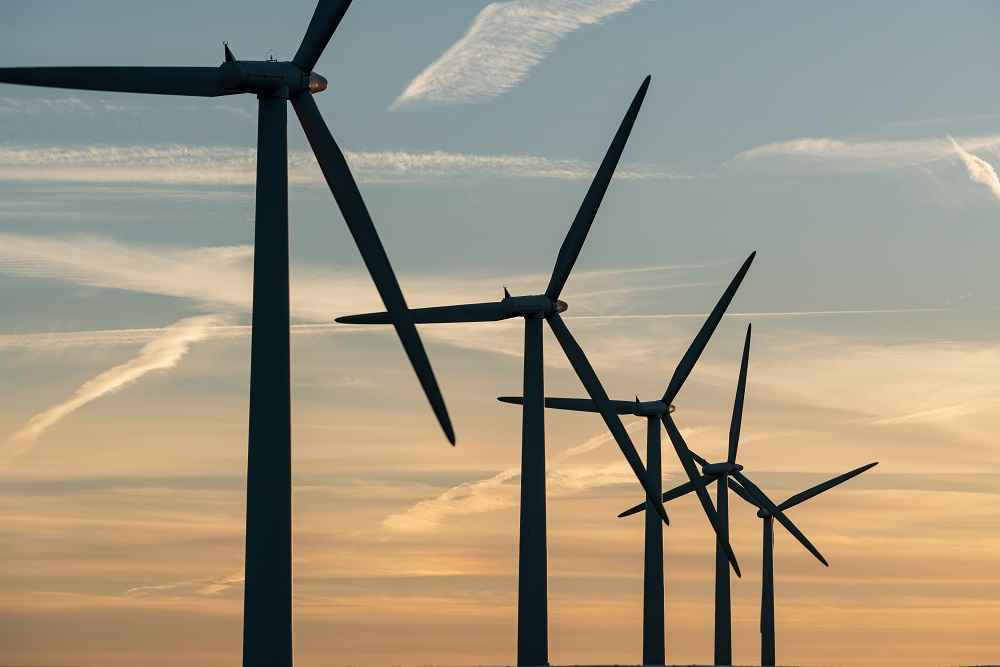Wind energy is one of the most promising and rapidly growing sources of renewable energy in the world. As we seek cleaner and more sustainable alternatives to fossil fuels, the ability to generate electricity from the wind has become increasingly vital. In this article, we’ll explore how wind energy is generated, its benefits, and its potential for the future.
The Science Behind Wind Energy
At its core, wind energy is generated through the conversion of wind’s kinetic energy into electrical power. This process begins with wind turbines, which are designed to capture the wind’s energy. A typical wind turbine consists of a rotor with blades, a nacelle (which houses the generator and other machinery), and a tower. When the wind blows, it causes the blades to spin. This rotational motion turns the rotor, which is connected to a generator inside the nacelle. The generator then converts the mechanical energy into electricity.
The amount of electricity produced depends on several factors, including the wind speed, the size of the turbine, and the efficiency of the generator. Wind turbines are most effective in areas with consistent and strong winds. Coastal regions, open plains, and hilltops are ideal locations for wind farms due to their high wind potential.
Benefits of Wind Energy
One of the primary advantages of wind energy is its sustainability. Unlike fossil fuels, wind is an inexhaustible resource. As long as the wind continues to blow, we can harness its power to generate electricity. This makes wind energy a crucial component in reducing our reliance on non-renewable energy sources and combating climate change.
Another significant benefit is the minimal environmental impact of wind energy. Wind turbines do not produce greenhouse gas emissions during operation, making them a clean energy source. Additionally, the land used for wind farms can often be utilized for other purposes, such as agriculture, allowing for dual land use.
Wind energy also has the potential to create jobs and stimulate economic growth. The construction, maintenance, and operation of wind farms require a skilled workforce, providing employment opportunities in both rural and urban areas. Moreover, the growth of the wind energy sector can lead to advancements in technology and infrastructure, further driving innovation and economic development.
Challenges and Solutions
Despite its many benefits, wind energy does face some challenges. One of the main issues is the variability of wind. Since wind speeds can fluctuate, the amount of electricity generated by wind turbines can be inconsistent. This intermittency can pose challenges for integrating wind energy into the power grid, which requires a steady and reliable supply of electricity.
To address this issue, advancements in energy storage technologies are being developed. Batteries and other storage systems can store excess energy generated during periods of high wind and release it when wind speeds are lower. Additionally, integrating wind energy with other renewable sources, such as solar power, can help balance the overall energy supply.
Another challenge is the initial cost of setting up wind farms. The installation of wind turbines and related infrastructure can be expensive. However, the long-term benefits and cost savings from reduced fossil fuel use and lower greenhouse gas emissions can offset these initial expenses. Government incentives and subsidies can also play a crucial role in making wind energy more economically viable.
The Future of Wind Energy
The future of wind energy looks promising, with continued advancements in technology and increasing global support for renewable energy initiatives. Innovations in turbine design, such as larger and more efficient blades, are enhancing the capacity and efficiency of wind turbines. Floating wind farms, which can be installed in deeper waters where winds are stronger, are also being developed and deployed.
Moreover, international cooperation and policy support are crucial for the growth of wind energy. Many countries have set ambitious targets for increasing their share of renewable energy, and wind power is a key component of these plans. By investing in wind energy infrastructure and research, we can accelerate the transition to a cleaner and more sustainable energy future.
In conclusion, wind energy is a vital part of our efforts to combat climate change and reduce our dependence on fossil fuels. By understanding how wind energy is generated, appreciating its benefits, addressing its challenges, and supporting its future development, we can harness the power of the wind to create a cleaner, greener world.


